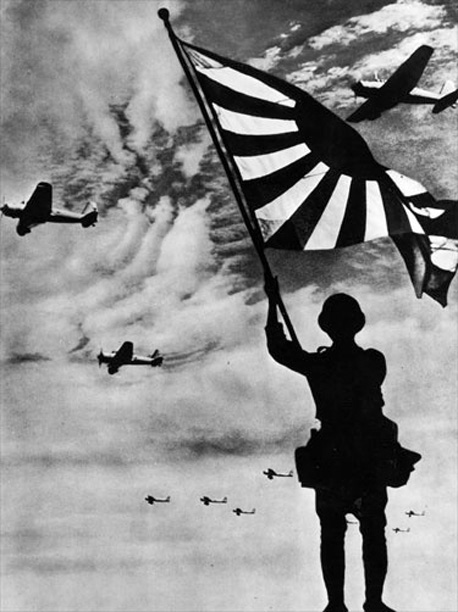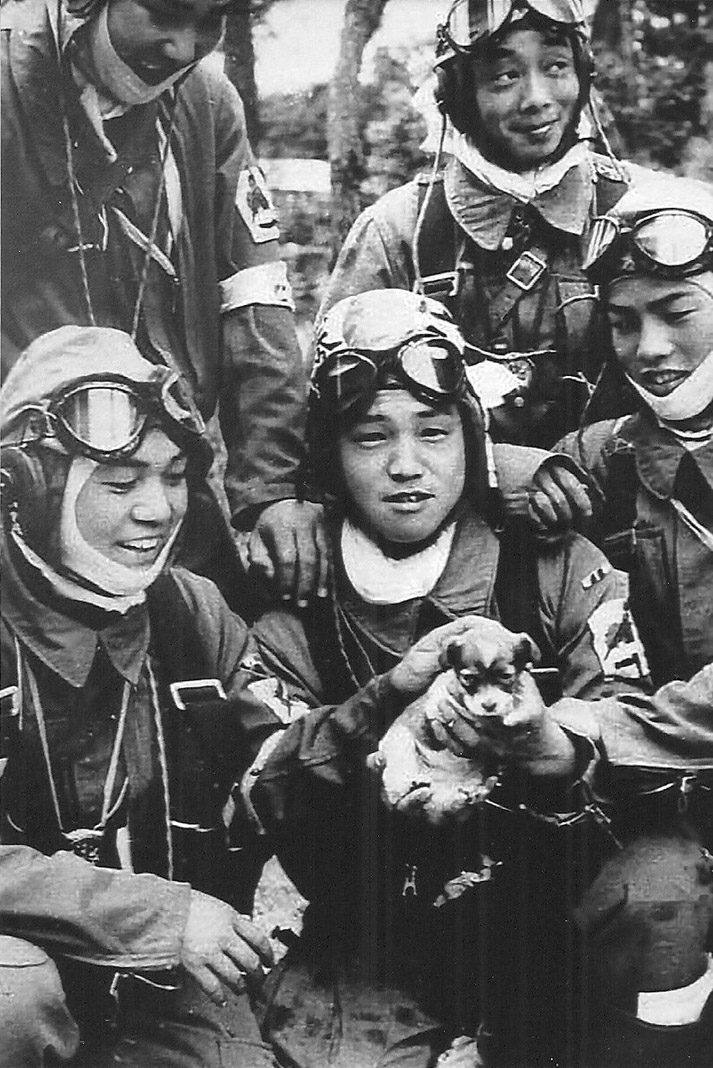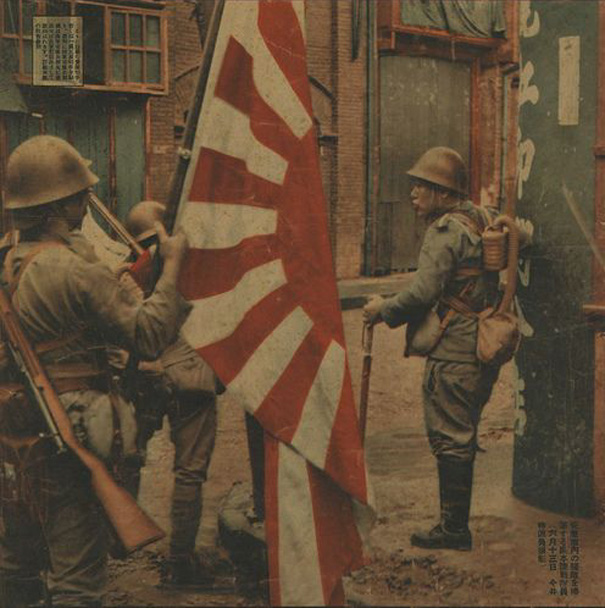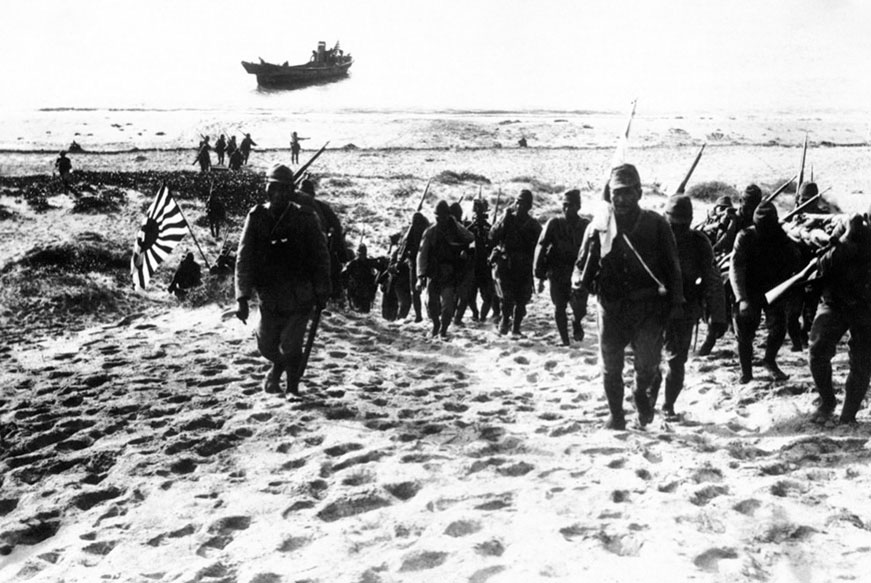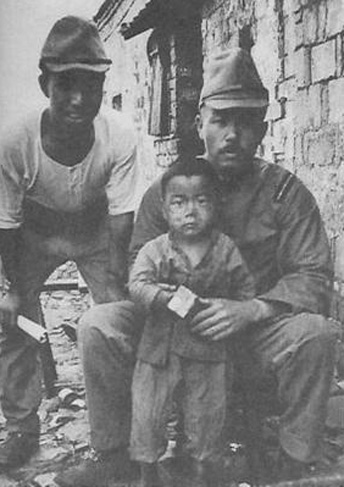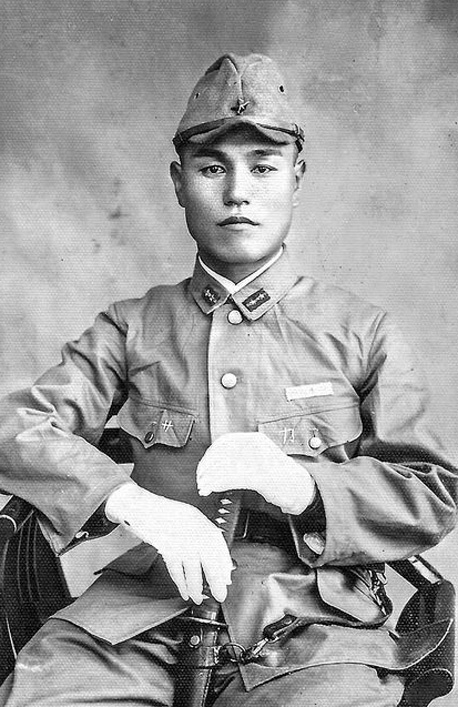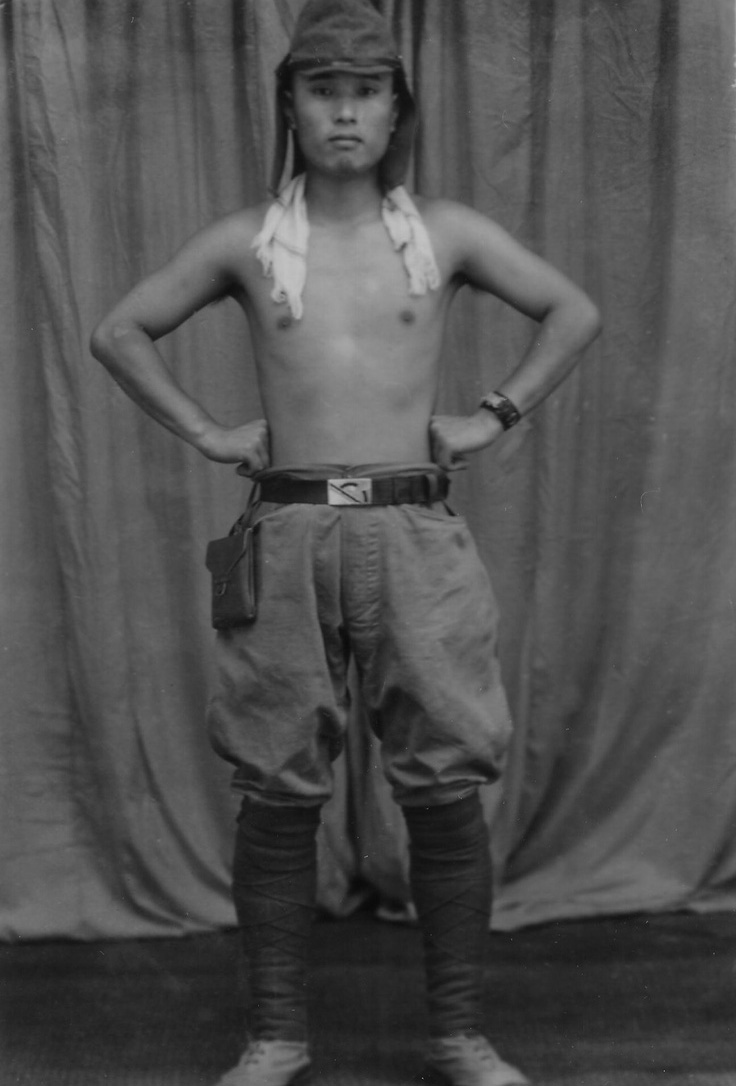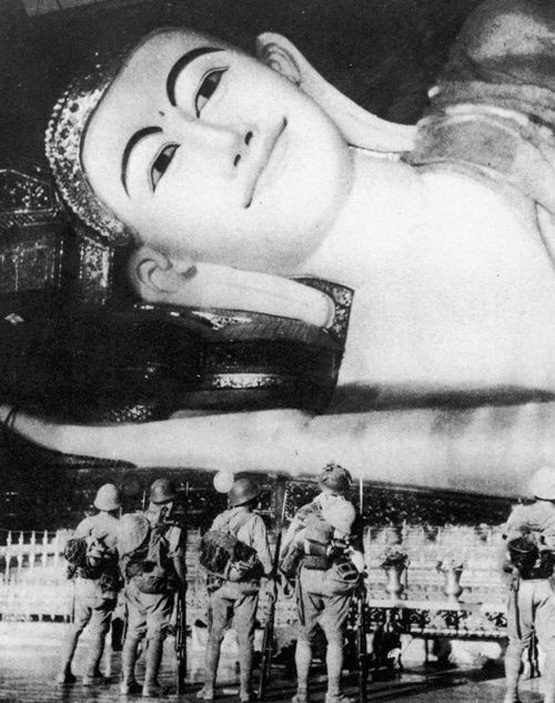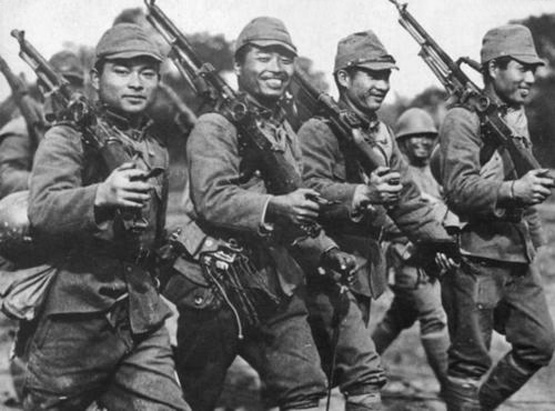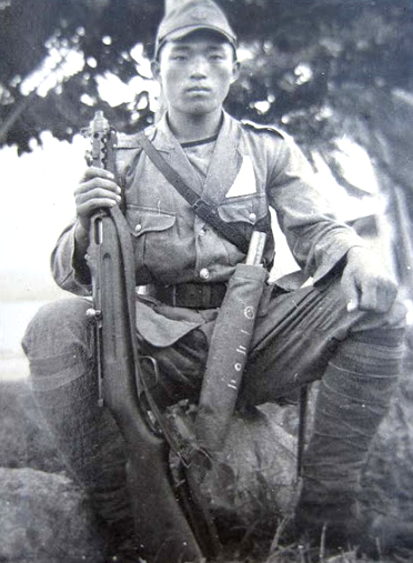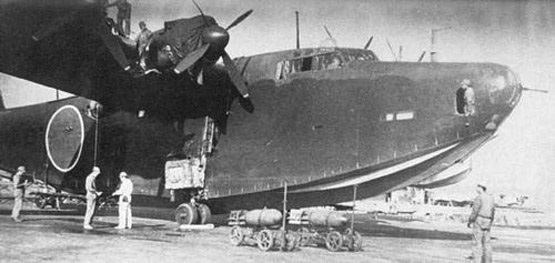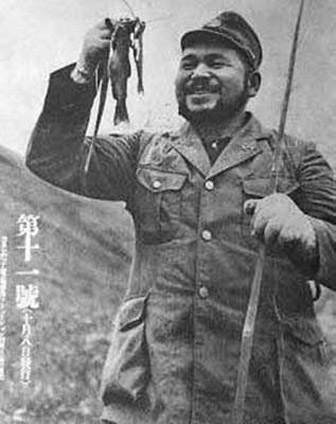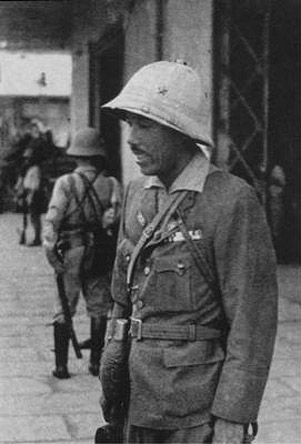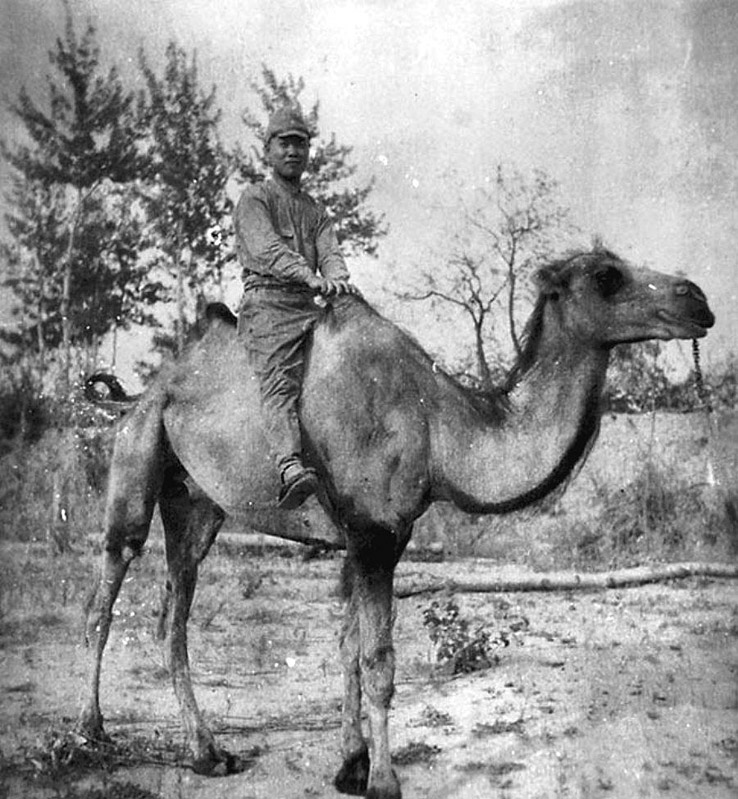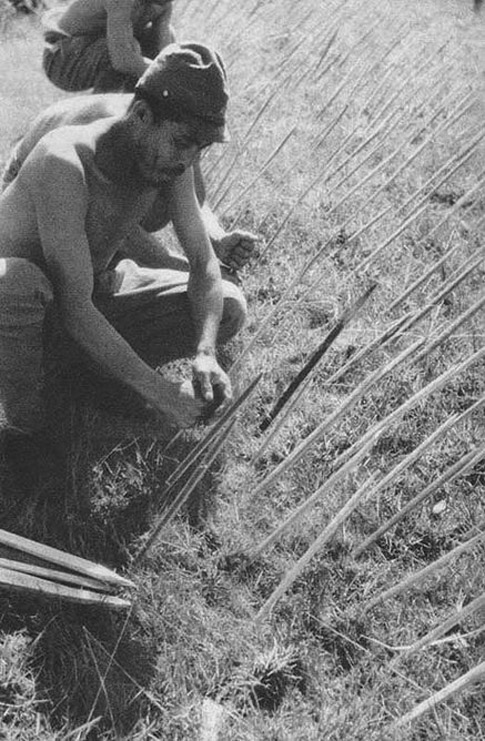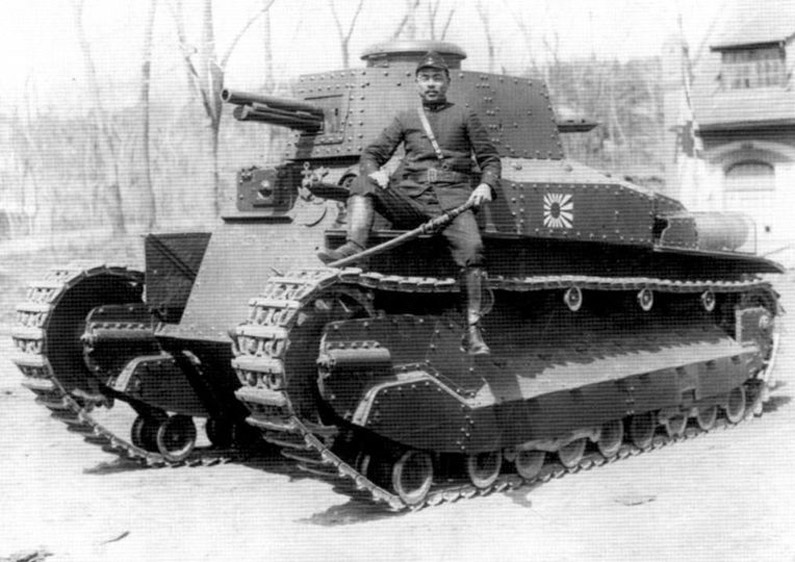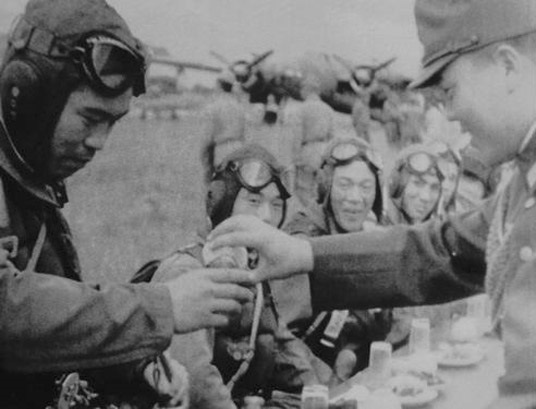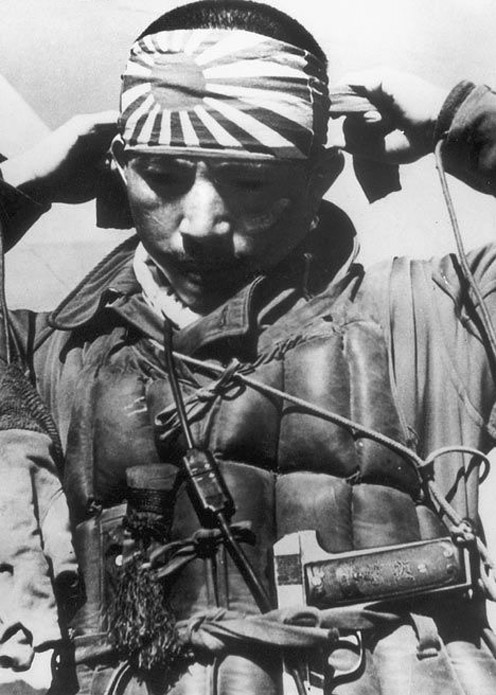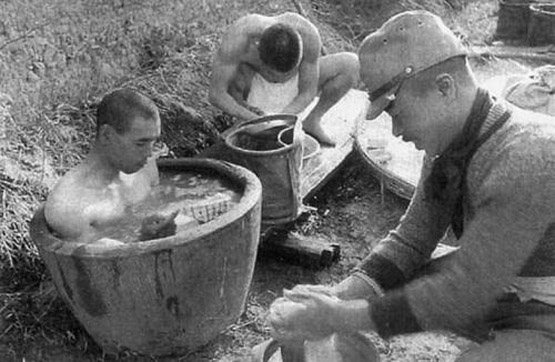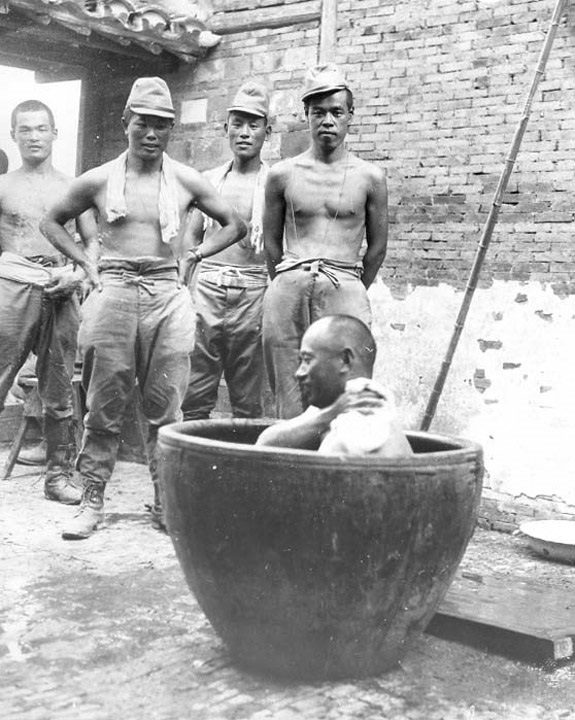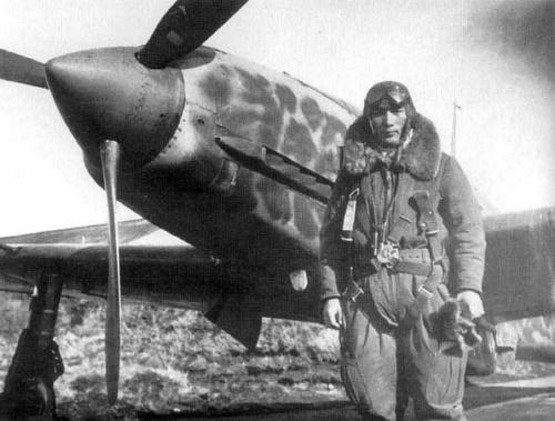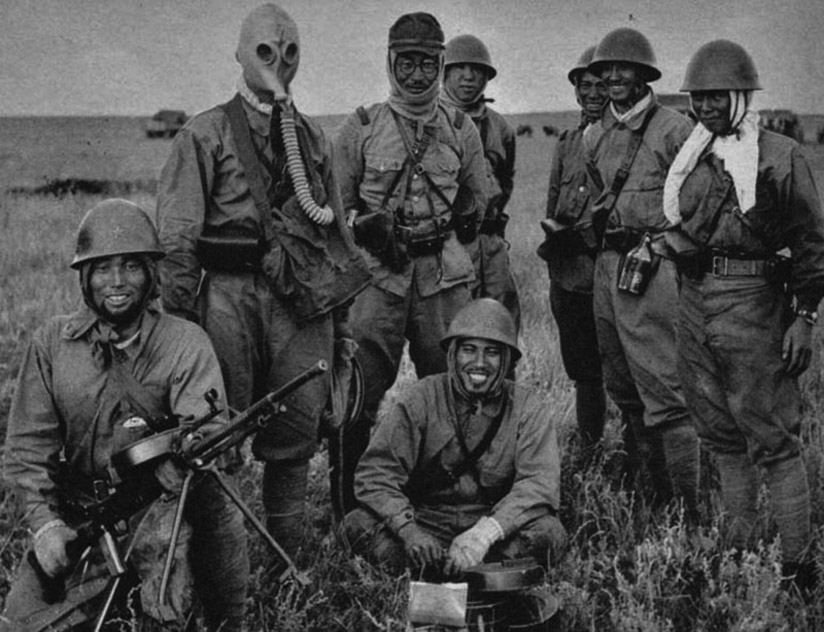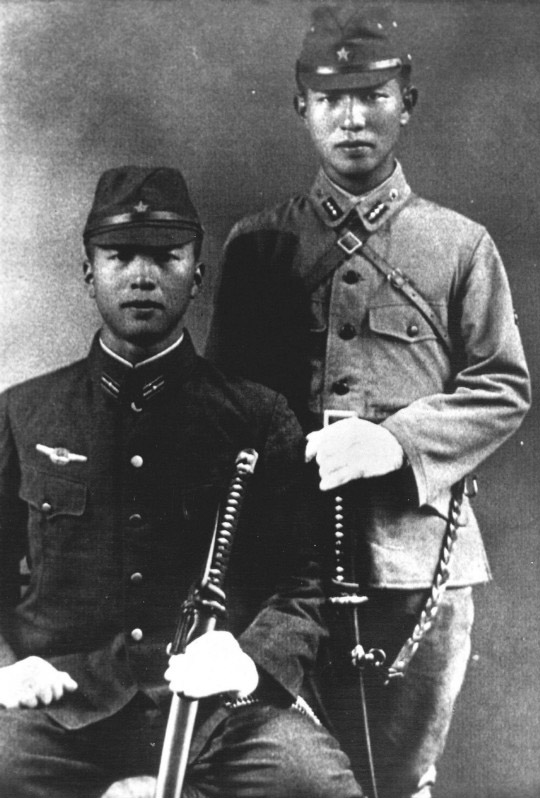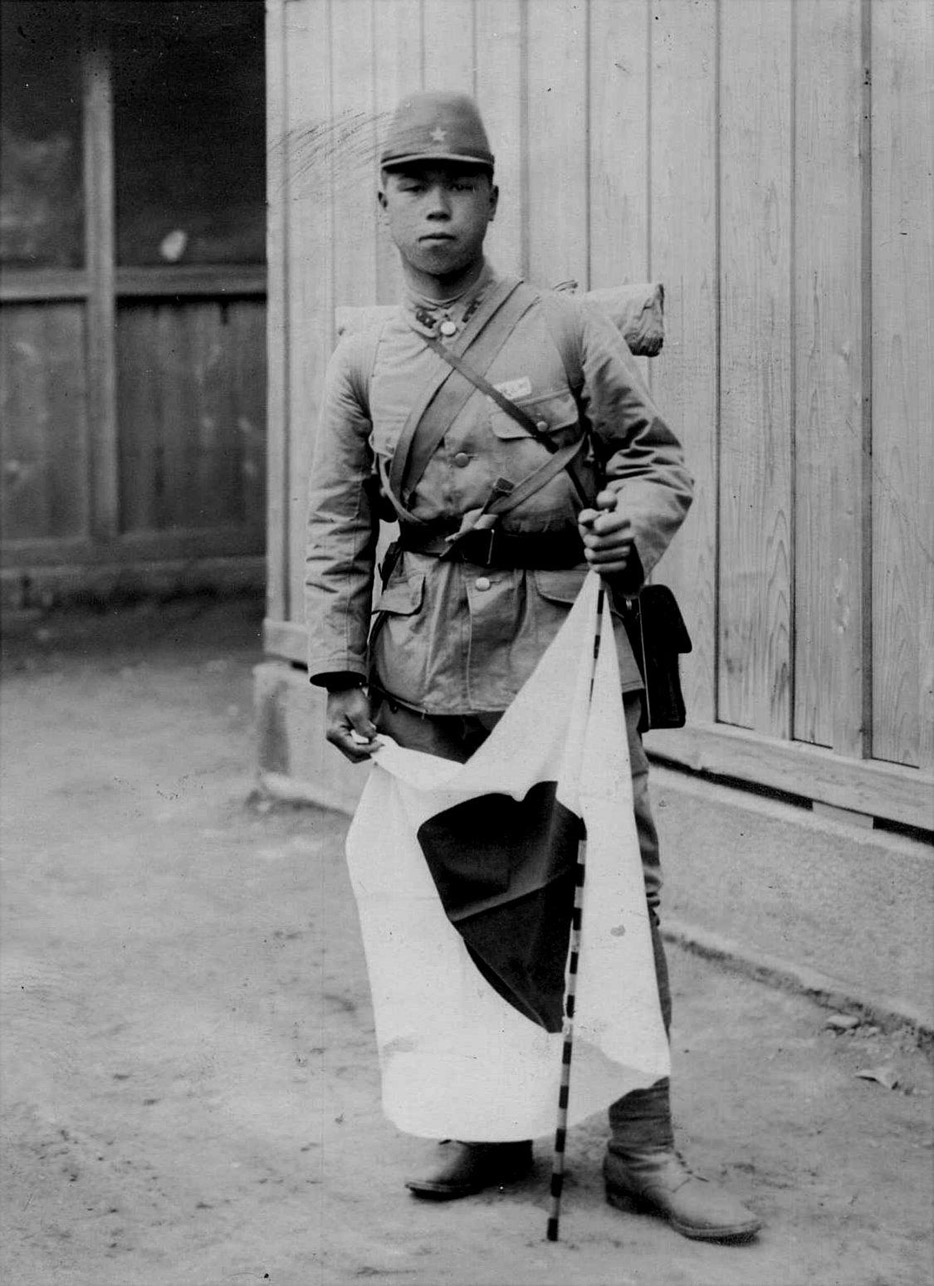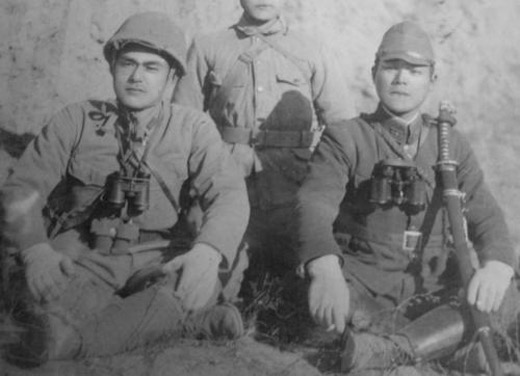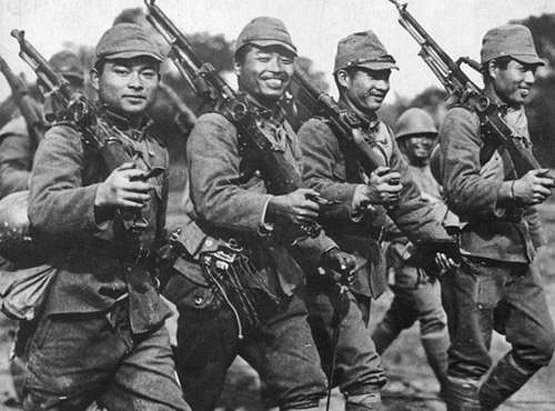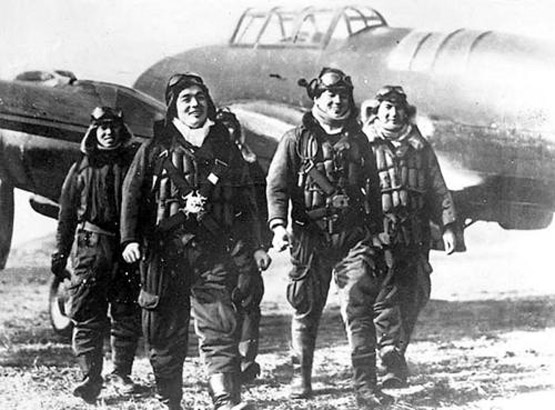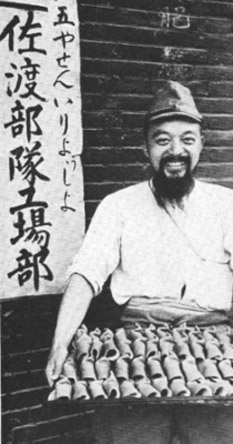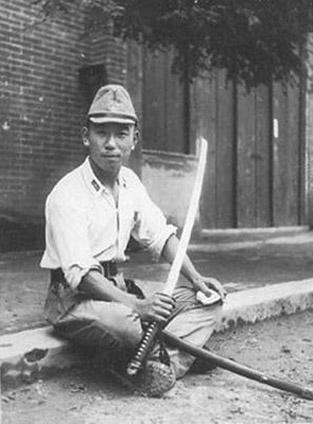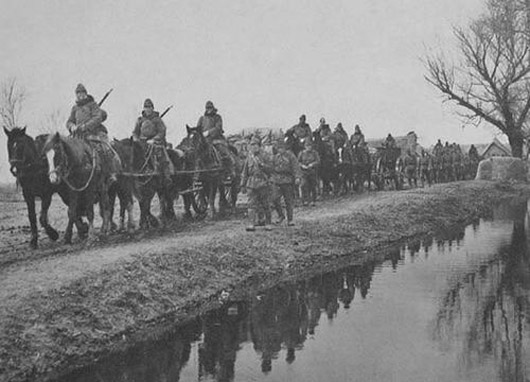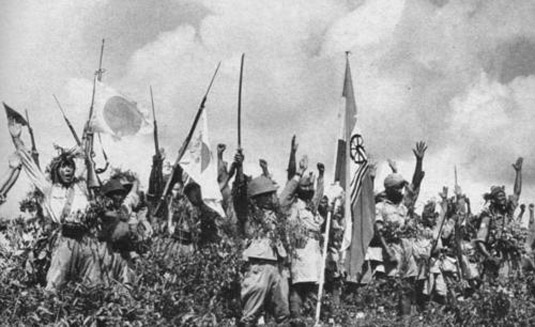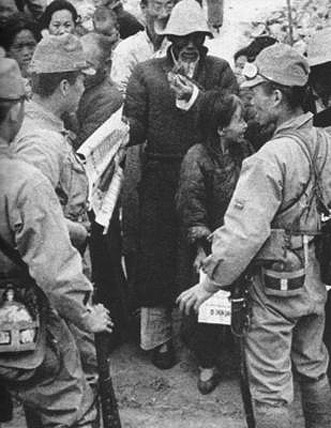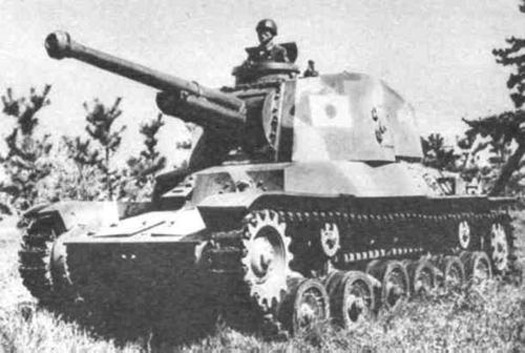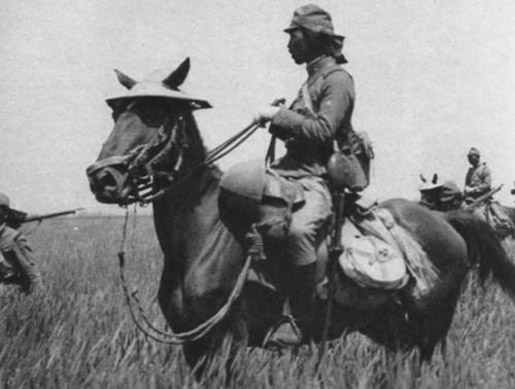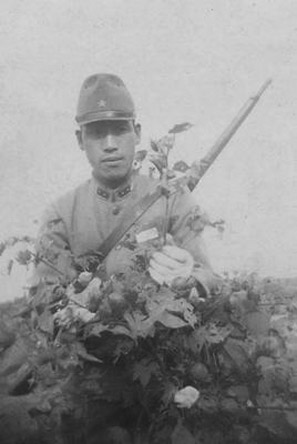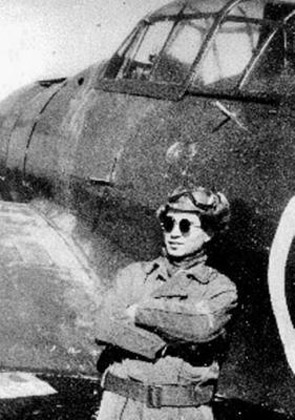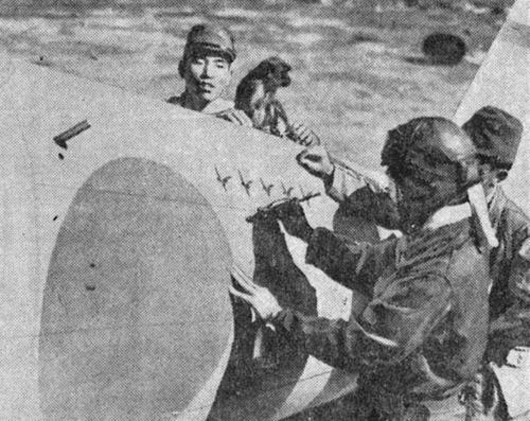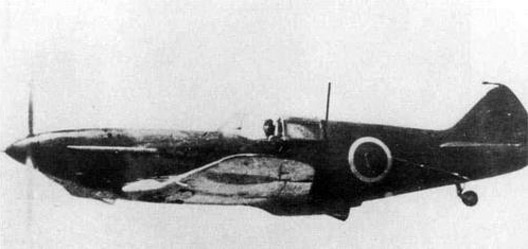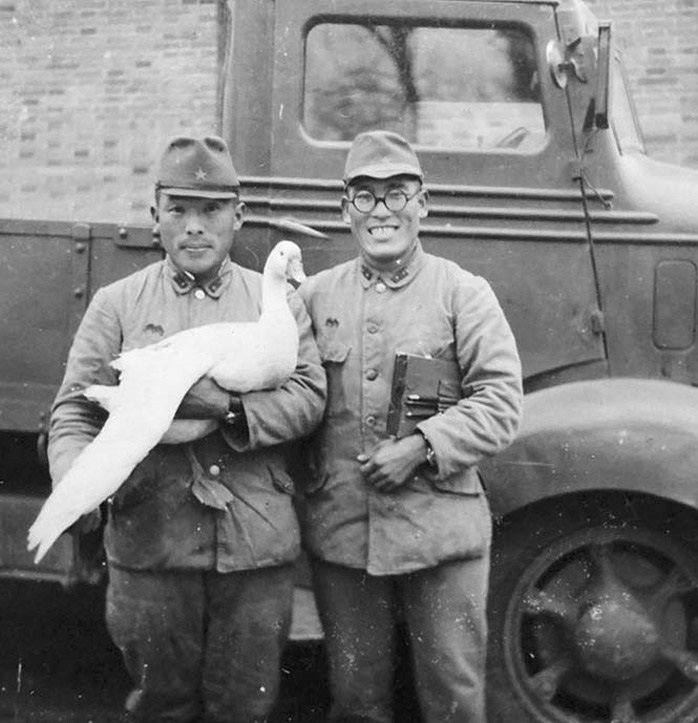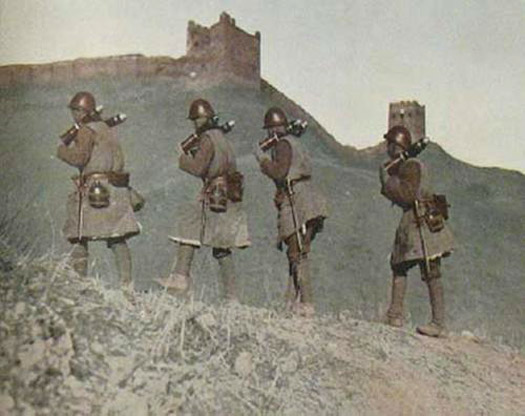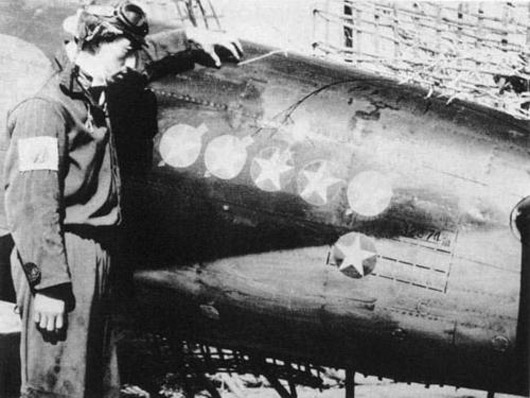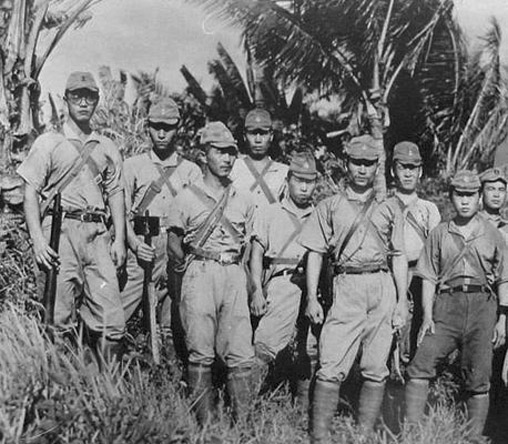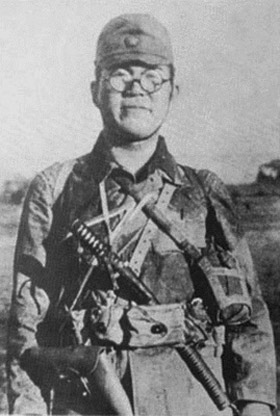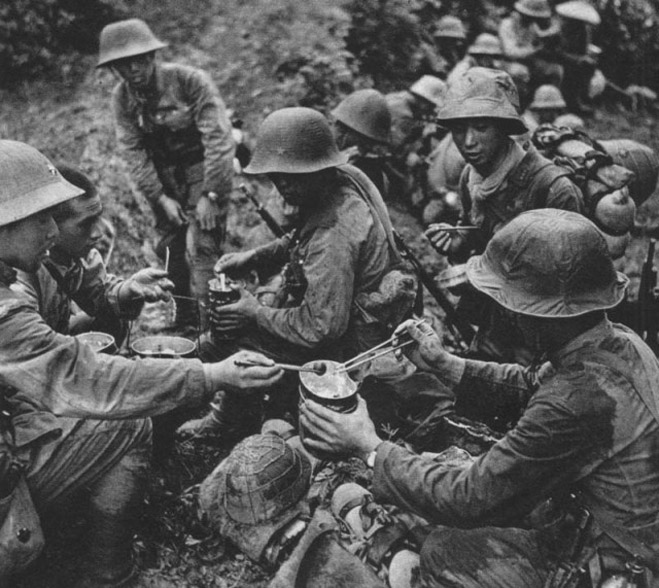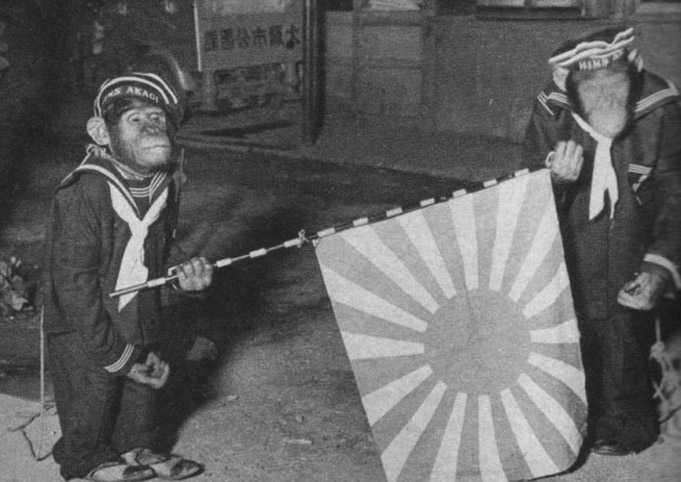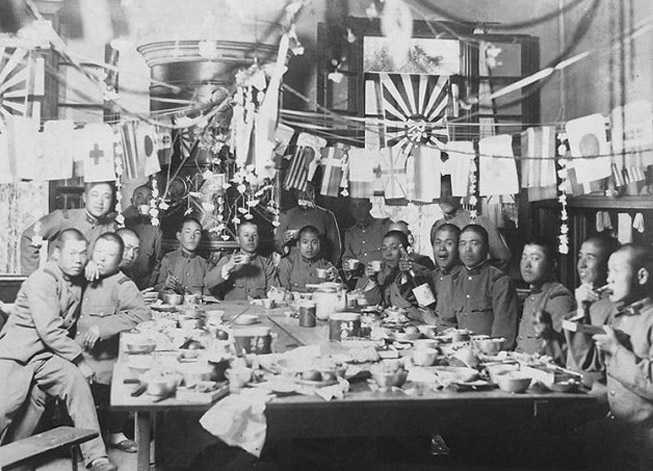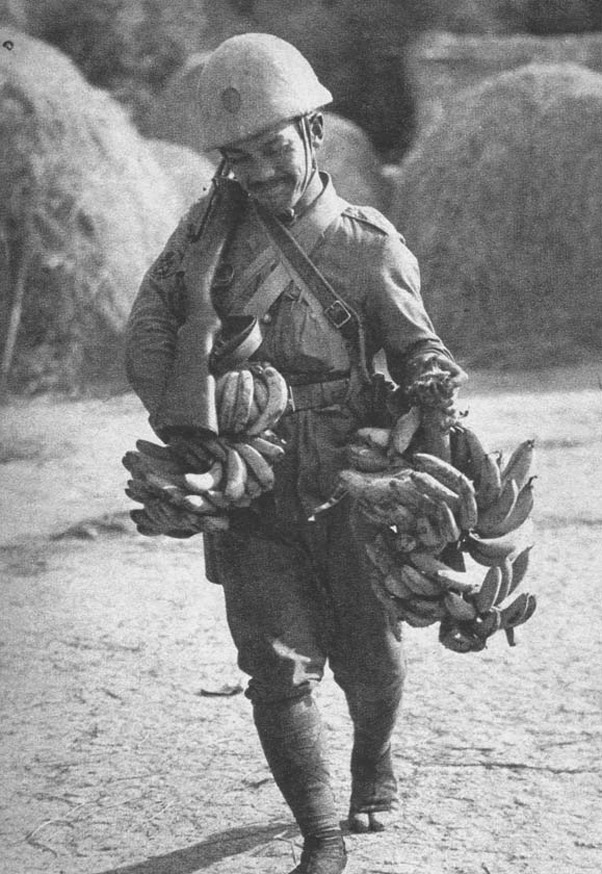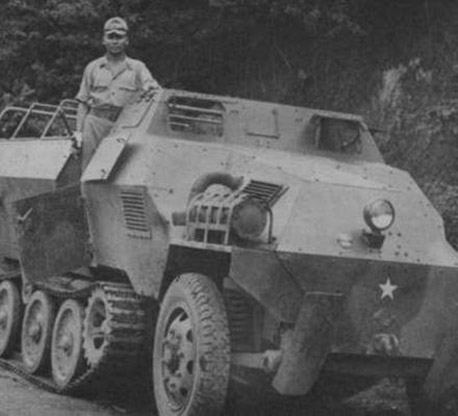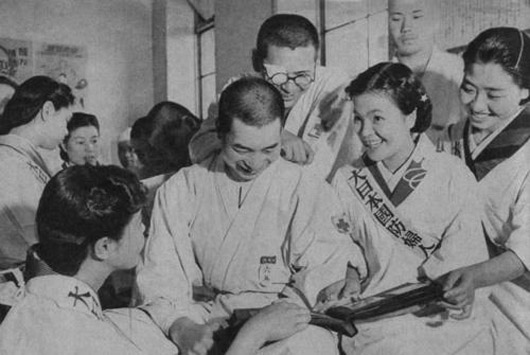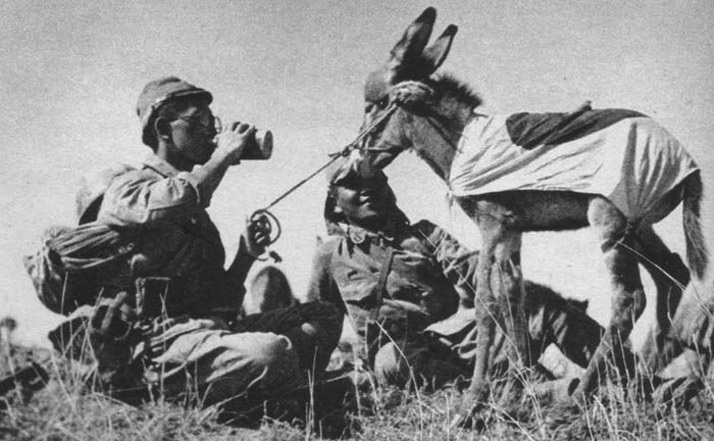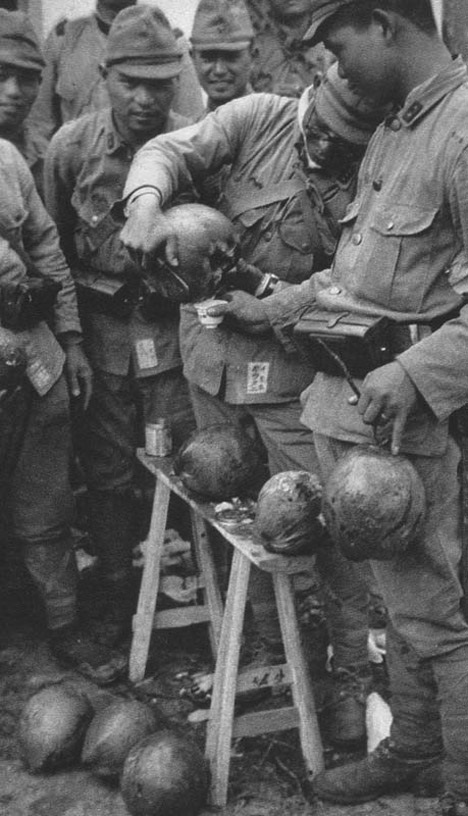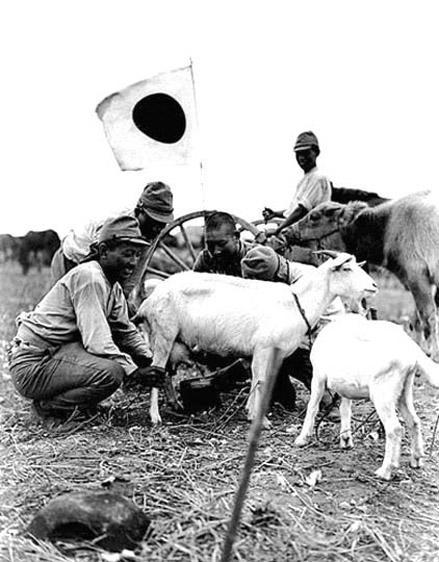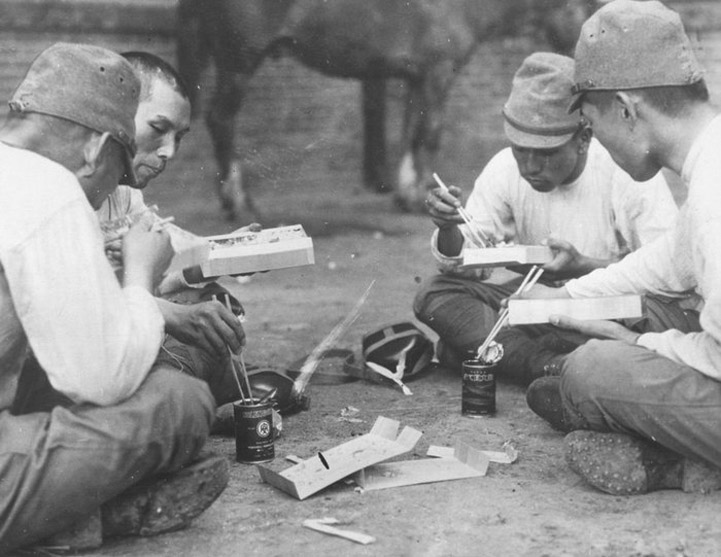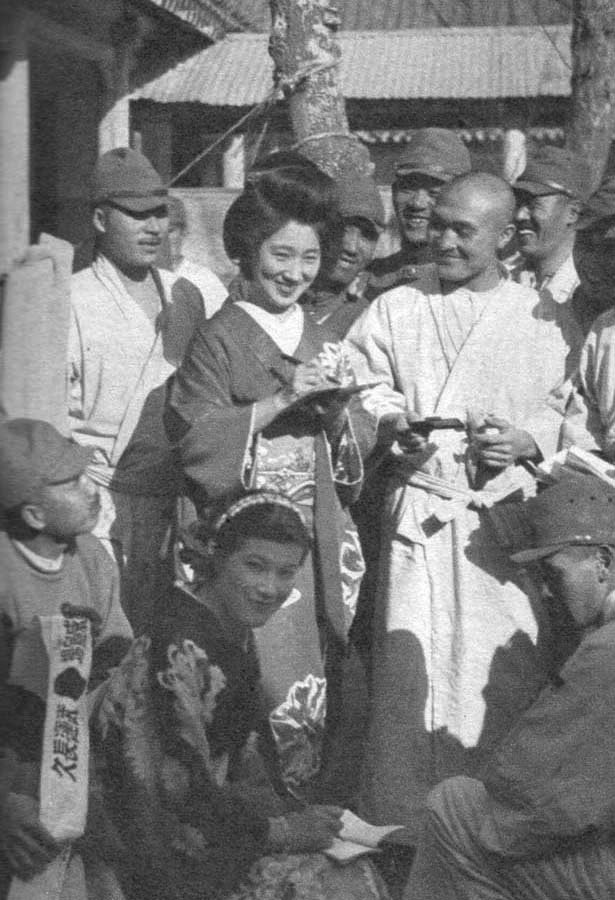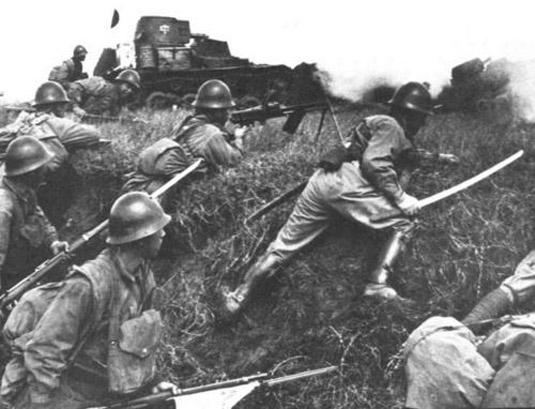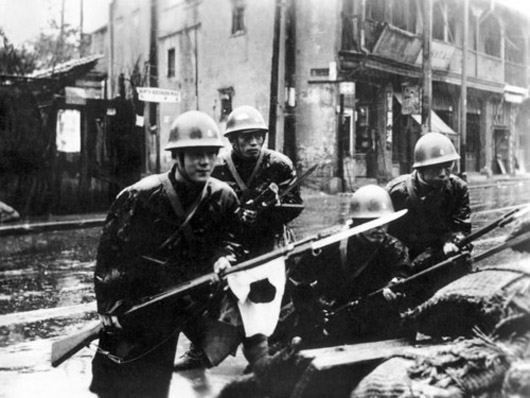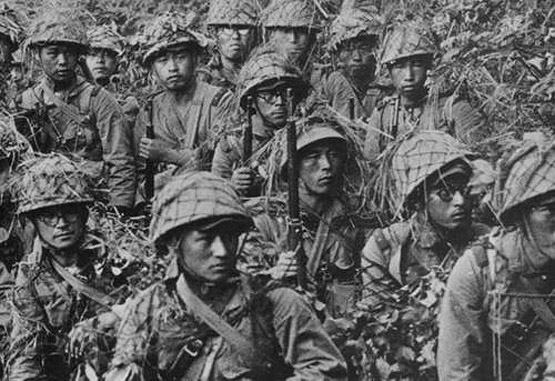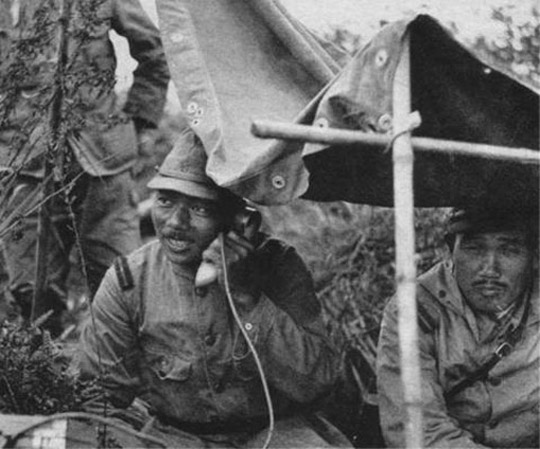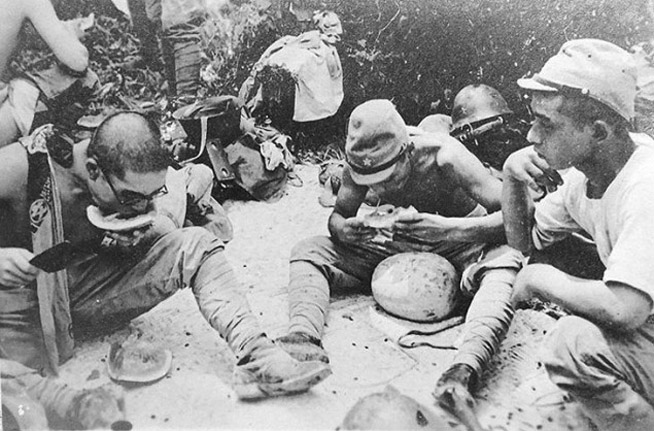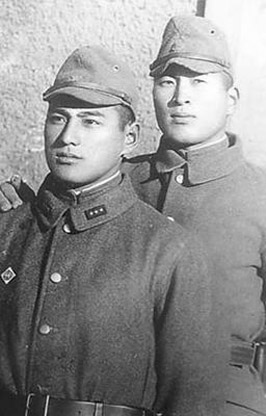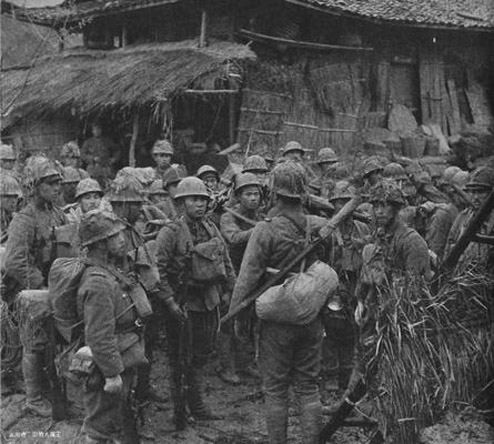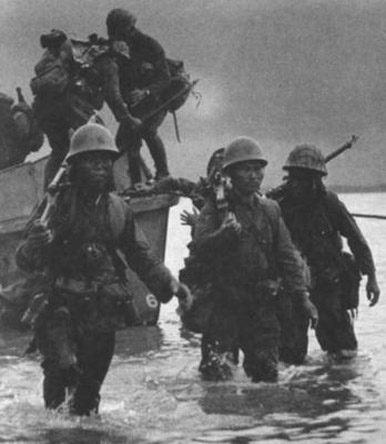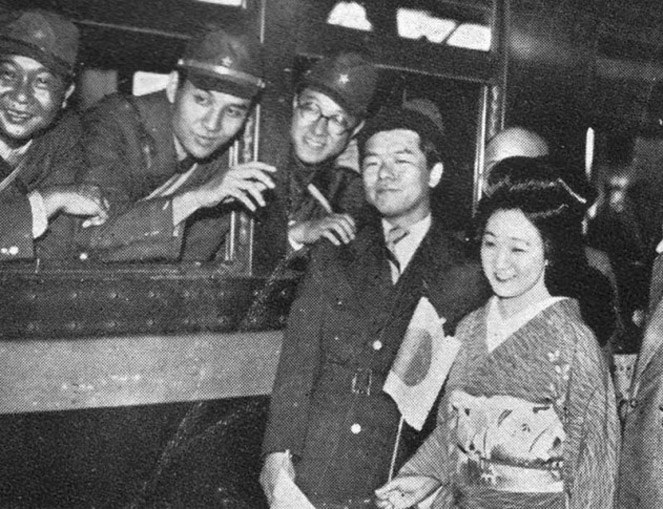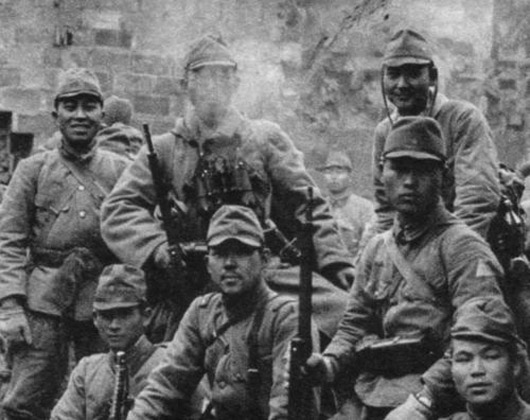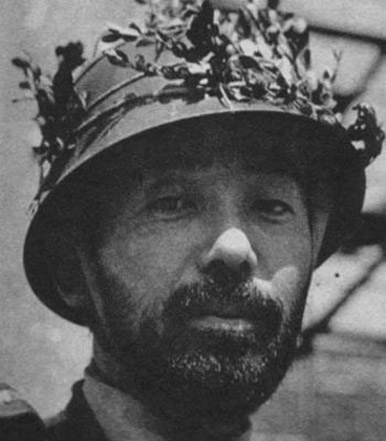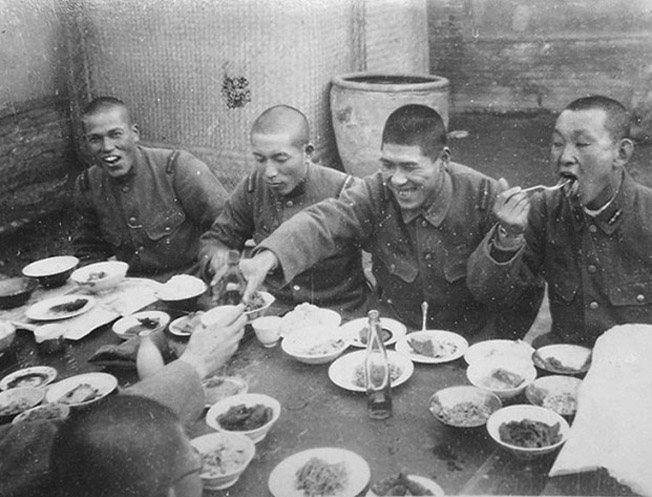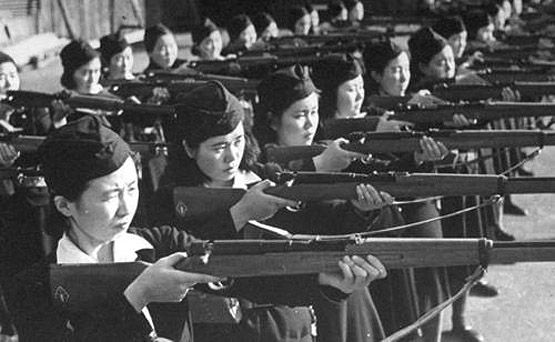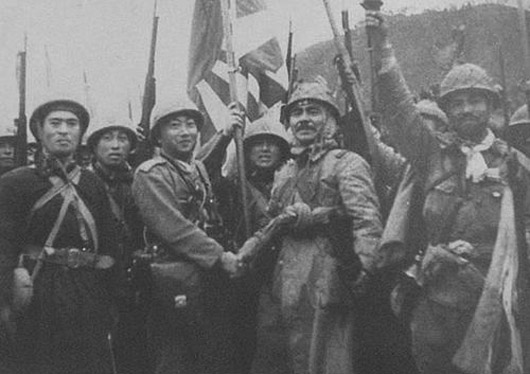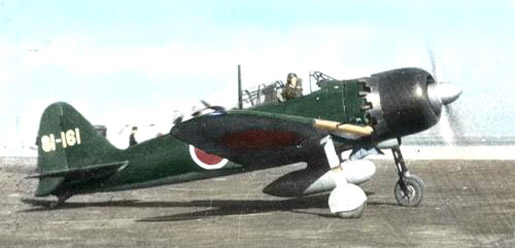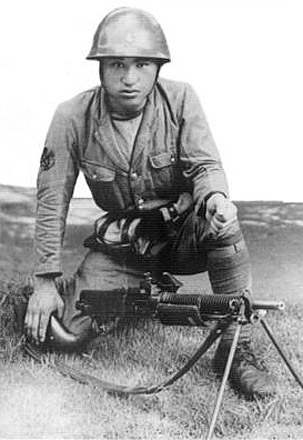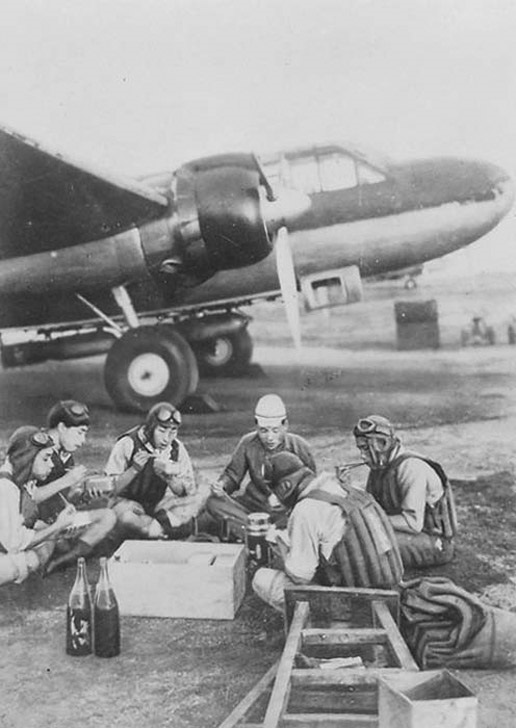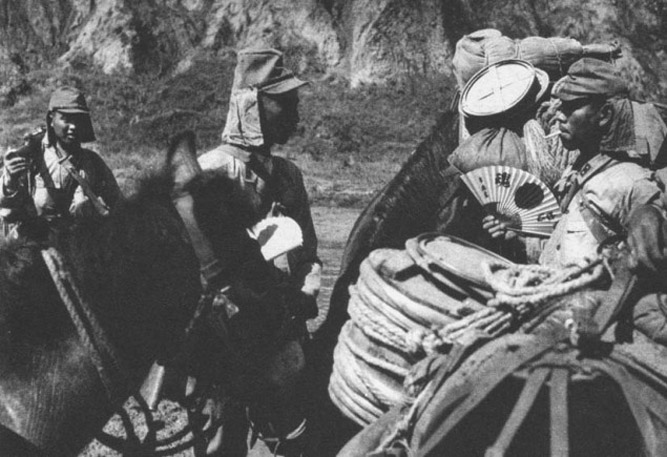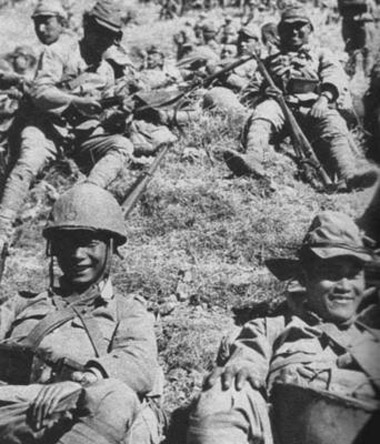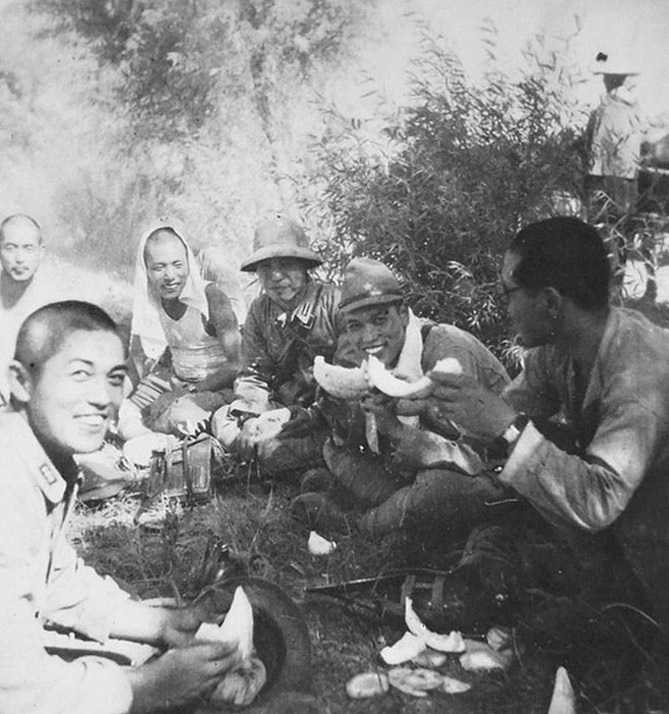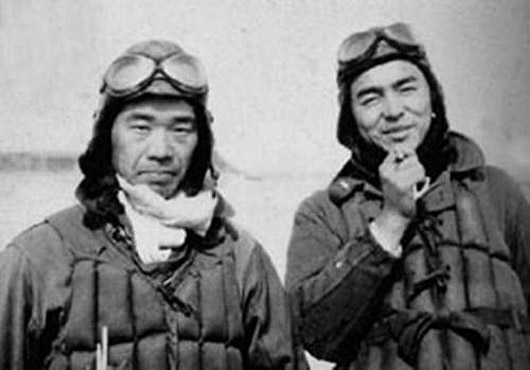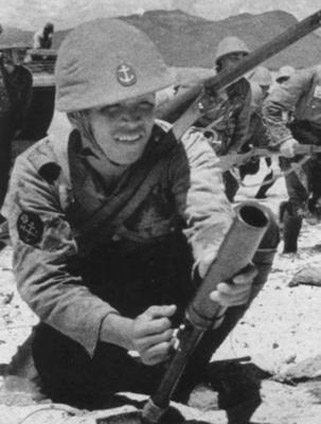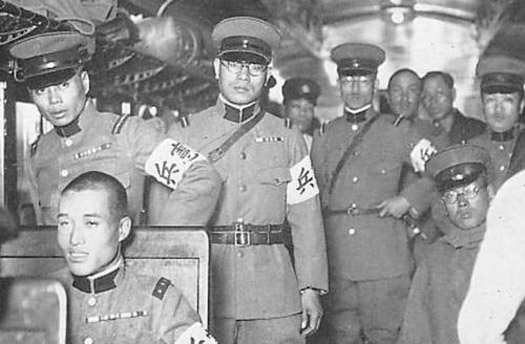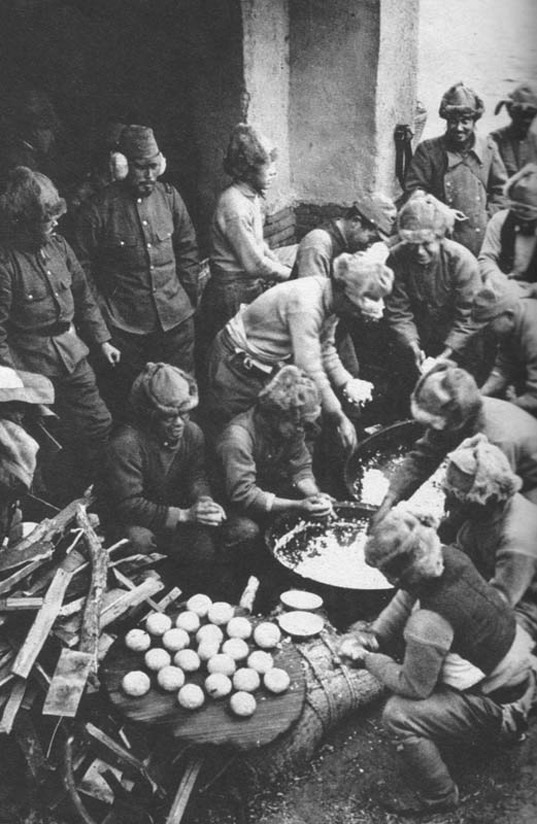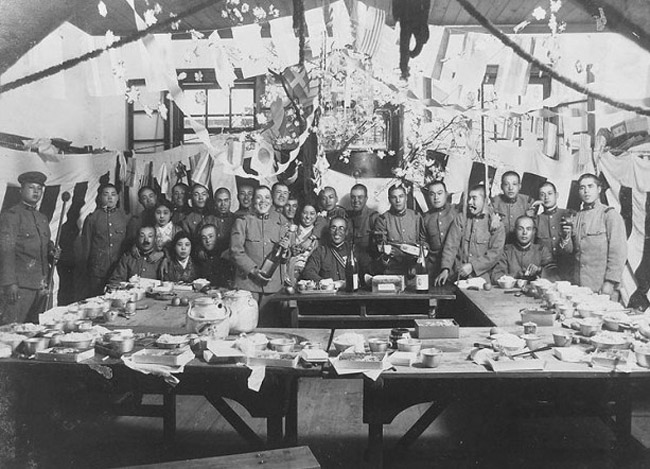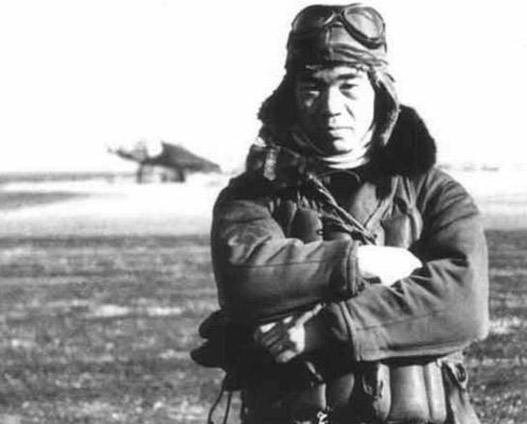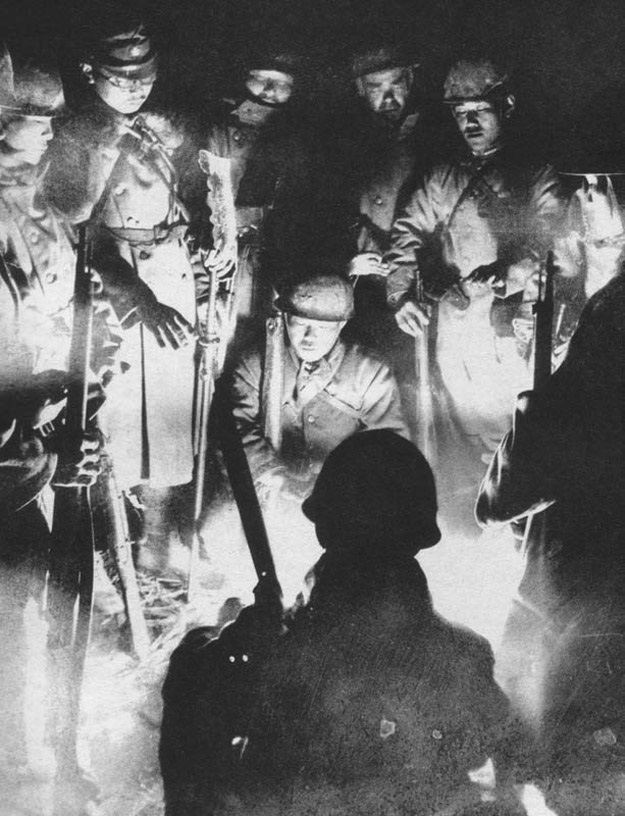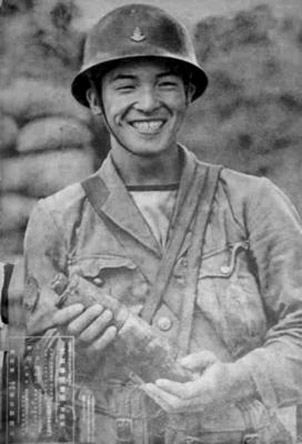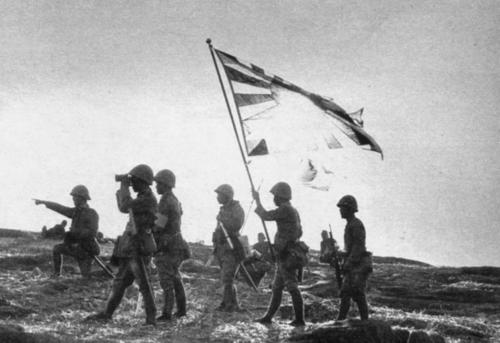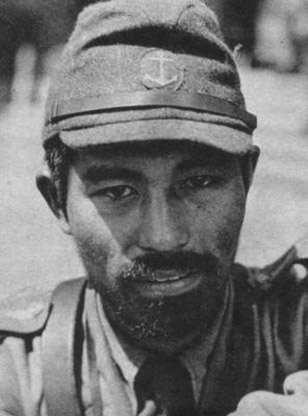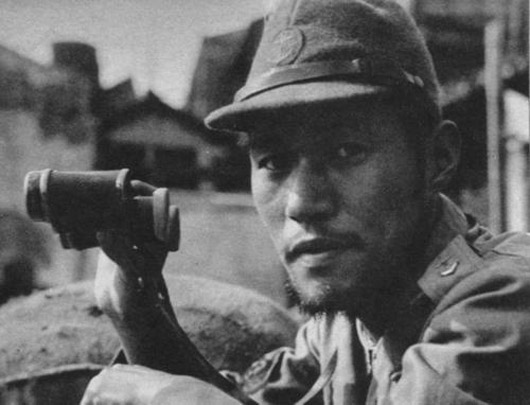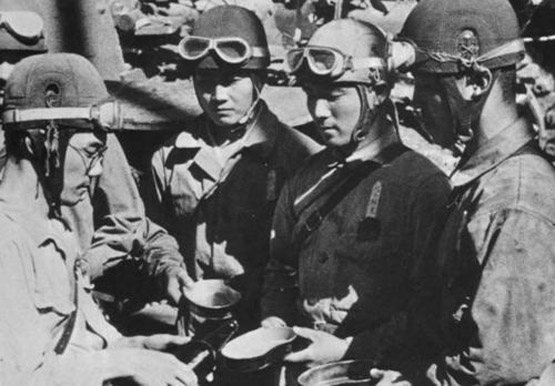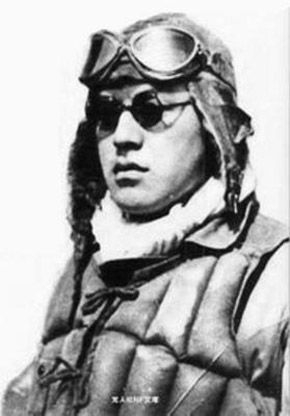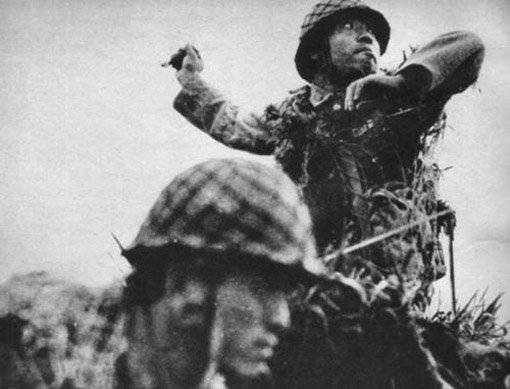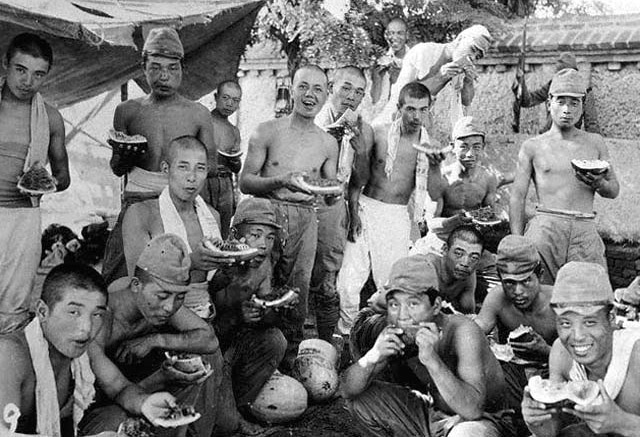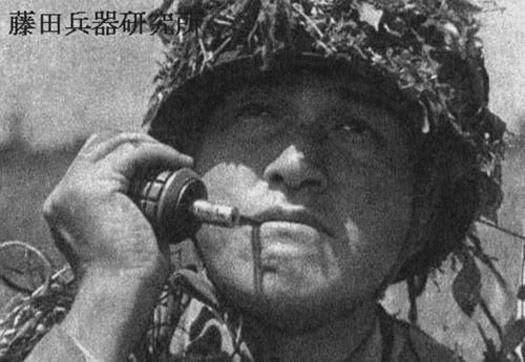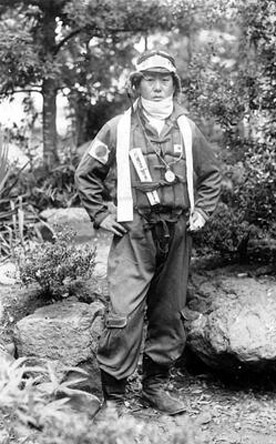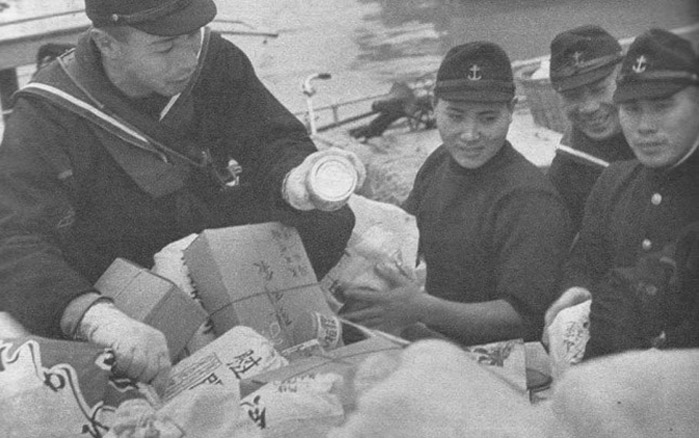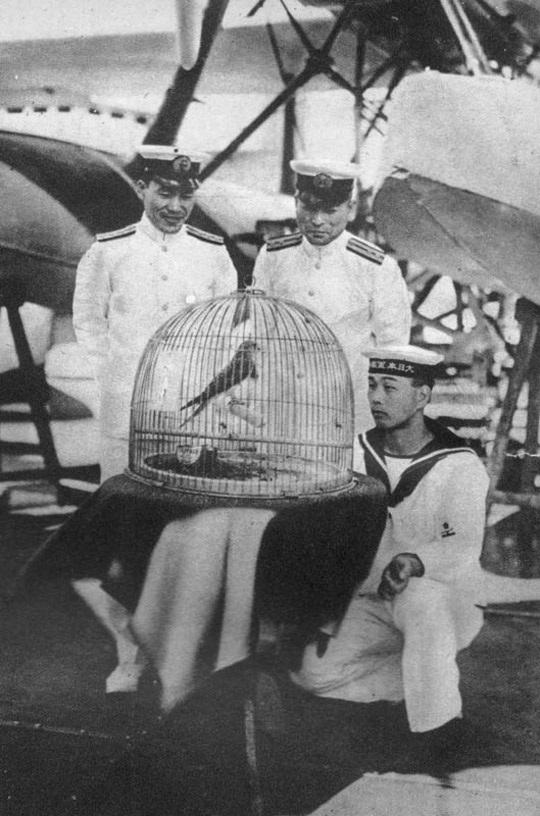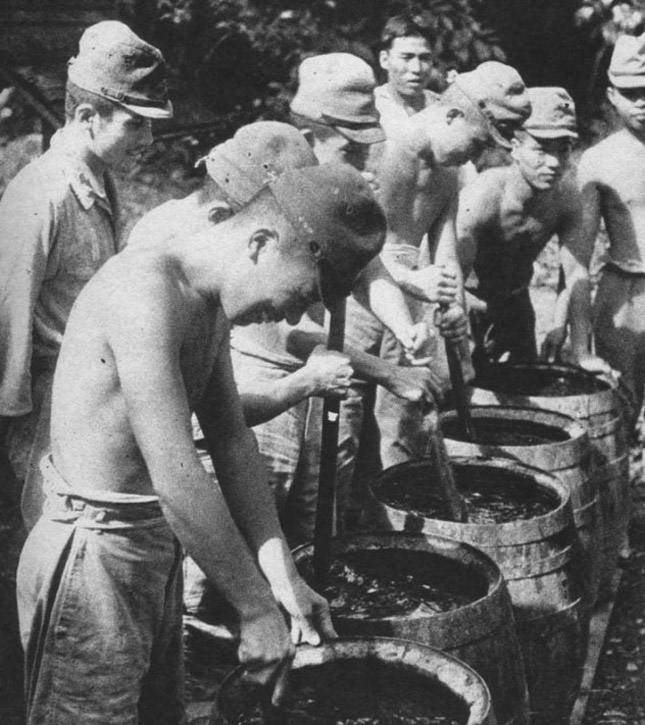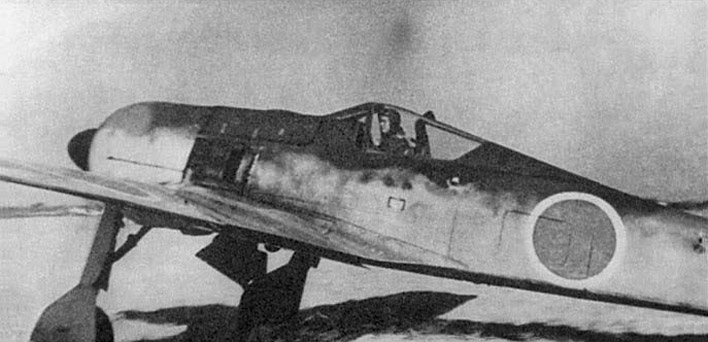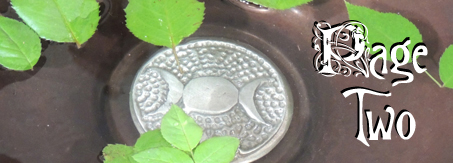It is hard for many Westerners to understand the kamikaze, but the heroism of sacrificing one's life in battle is common amongst all peoples. The only difference is the kamikaze knew for certain he would die from his actions.
The kamikaze would often spend his last days on earth in quiet comtemplation. One such unit found themselves sent to dilapidated surroundings while awaiting their orders. They spent their final days improving their surroudnings up until the moment they had to leave for their final mission. The last words of one such man named 'Sonada' show his calm determination to his cause and loyalty to his nation. Writ on a pilot's plexiglass writing board which they strapped to their thighs, were his defiant words 'Defeated but not conquered, men of the 65th Fighter Squadron were born separtely but die together'.
He was shot down over Okinawa, dying in the crash. He wrote these final words as five of the pilots planes he commmanded began their dive as kamikazes.
[Above: Japan kamikaze pilot, Yukio Araki, holding a puppy on May 26, 1945. He martyred himself the following day in a kamikaze attack on ships near Okinawa. He was part of the 72nd Shinbu Squadron.]
[Above: Close-up.]
[Above: Chinese orphan adopted by Japanese soldiers, circa 1938]
[Above: Navy officer studio photo.]
[Above: Somewhere in Burma.]
[Above: Japanese soldiers in Burma, circa 1942.]
[Above: Japanese Navy MP-34 gunner.]
[Above: The mighty Kawanishi Flying boat.]
[Above: A soldier fishing in the Aleutians (1942).]
[Above: A Japanese officer with a tropical helmet, Indochina.]
[Above: A Japanese soldier on a camel.]
[Above: A soldier setting Punji sticks.]
[Above: ...]
[Above: A Japanese officer pours pilots Sake.]
[Above: A Japanese pilot fastens a headband.]
[Above: Bath time!]
[Above: Soldiers wait in line for a bath.]
[Above: Pilot Tembico Kobayashi.]
[Above: A very lighthearted shot.]
[Above: Two officers in a studio portrait.]
[Above: ...]
[Above: Japanese soldiers on Iwo Jima island (February 1, 1945).]
[Above: Japanese soldiers marching with captured machine guns.]
[Above: A group of Japanese pilots. Second on the left - Sachio Endo, officially credited for shooting down or damaging 8 American bombers. He was killed in action on January 14, 1945.]
[Above: A Japanese army cook with a treat for the soldiers.]
[Above: ...]
[Above: A horseback supply column.]
[Above: Burma, 1944.]
[Above: Tank crew man of the 3rd Tank Divison speaking with Chinese civilians after the battle of Central Henan, May 1944.]
[Above: Japanese heavy tank, 1945.]
[Above: Horses equipped with sunhats in the tropical weather of South China, 1939.]
[Above: Somewhere in the South Pacific, 1941.]
[Above: Fighter pilot Tetsuo Iwamoto with his Zero fighter in 1945.]
[Above: Fighter pilot ace sits back in the cockpit (with pet monkey) while a comrade draws in another kill.]
[Above: This photo shows a captured Lavochkin-Gorbunov-Goudkov LaGG-3. The Japanese only utilised these for evaluation and testing.]
[Above: Two Japanese soldiers and their dinner.]
[Above: Soldiers from the 16th Infantry Brigade carrying ammuniton during the Battle of Jehol, near the Great Wall, 1933.]
[Above: Fighter pilot Takeo Tanimizu (32 kills) looking at his kill markings painted on his Zero fighter, Kyushu islands, 1945. Tanimizu once flew in low and threw his life preserver to U.S. Marine Captain Harvey Carter of Glendale, California, who had just been shot down and was swimming in the ocean.]
[Above: South China, 1943.]
[Above: Soldiers of the special naval landing force in Buna-Gona, New Guinea, November, 1942.]
[Above: Soldiers from the 18th Division, otherwise known as the Chrysanthemum Division, preparing for the front.]
[Above: ...]
[Above: Soldiers share a meal.]
[Above: A couple of soldiers monkeying around.]
[Above: ...]
[Above: ...]
[Above: Type 1 Ho-Ha half track during the Ichi-go offensive, 1944.]
[Above: Wounded Japanese soldiers with nurses, 1941.]
[Above: ...]
[Above: ...]
[Above: A goat loans a soldier some milk.]
[Above: ...]
[Above: ...]
[Above: Tankettes of 7th Independent Tankette Company under Captain Yamada attacking Chinese troops during the battle of Nanchang, 1939.]
[Above: Special Naval Landing Forces on a Shanghai street in heavy rain during the August 1937 fighting.]
[Above: New Guinea, 1942.]
[Above: A soldier reporting the battle situation, Nanchang, 1939.]
[Above: 'A soldier marches on his belly alone'.]
[Above: Two brothers in the same divison, 1940.]
[Above: Soldiers are briefed before an operation.]
[Above: New Guinea.]
[Above: Soldiers off to the front.]
[Above: Winter, 1939.]
[Above: A member of the Special Naval Landing Forces (SNLF or Rikusentai).]
[Above: ...]
[Above: Females of the Volunteer Fighting Corps armed with Arisaka rifles. This force was established in June 1945 as a last desperate measure.]
[Above: Men of the Special Naval Landing Forces (SNLF or Rikusentai) in south China, 1938.]
[Above: Ace Sadamu Komach (April 18, 1920 - July 15, 2012) and his Zero fighter.]
[Above: A soldier of the Special Naval Landing Force seen here with a Type II light machine gun, Shanghai, 1937.]
[Above: A group of pilots take some time out to eat.]
[Above: A little libation makes the food go down all the better.]
[Above: Japanese soldiers with sun hats.]
[Above: A group of soldiers about to enjoy some roasted wild boar.]
[Above: 'Smile for the camera', 1940.]
[Above: A drink amongst comrades.]
[Above: A group of soldiers in sun hats enjoy some melons.]
[Above: Aces Saburo Sakai and Hiroyoshi Nishizawa on Rabaul Island, these two men destroyed more than 150 Allied plances between the two of them.]
[Above: A soldier using a grenade launcher during the battle of Manado, Indonesia, January, 1942.]
[Above: Kempeitai officers (Japan's Military Police) traveling by train, 1935.]
[Above: Soldiers making food, China.]
[Above: A victory celebration.]
[Above: Ace Saburo Sakai after destroying a Russian bomber, China, 1939.]
[Above: Soldiers gather around the fire for warmth.]
[Above: A member of the Special Naval Landing Forces (SNLF or Rikusentai).]
[Above: Men of the Special Naval Landing Forces (SNLF or Rikusentai).]
[Above: A member of the Special Naval Landing Forces (SNLF or Rikusentai).]
[Above: A member of the Special Naval Landing Forces (SNLF or Rikusentai).]
[Above: Men from the the 42nd Infantry Regiment led by Major Hajime Shimada. They are the crew of a type 97 medium tank. This picture was taken before the Battle of Slim River, Malaysia, 1942.]
[Above: A Zero fighter pilot looking cool.]
[Above: A soldier in the midst of throwing a grenade and the American marines at Guadalcanal.]
[Above: Melons for everyone! Japanese soldiers very often had to find provisions, including food from their surroundings.]
[Above: A soldier and his pet goat showing patriotism.]
[Above: A soldier pulls the pin on a Type 97 grenade in the Phillipines.]
[Above: A great shot of soldiers staring into the beyond.]
[Above: A pilot looking determined and cool.]
[Above: The best time for a soldier - mail from home!]
[Above: Japanese Naval officers feed their pet bird.]
[Above: Hmmm...?]
[Above: A German-made Focke-Wulf Fw 190A-5 used by the Japanese.]
